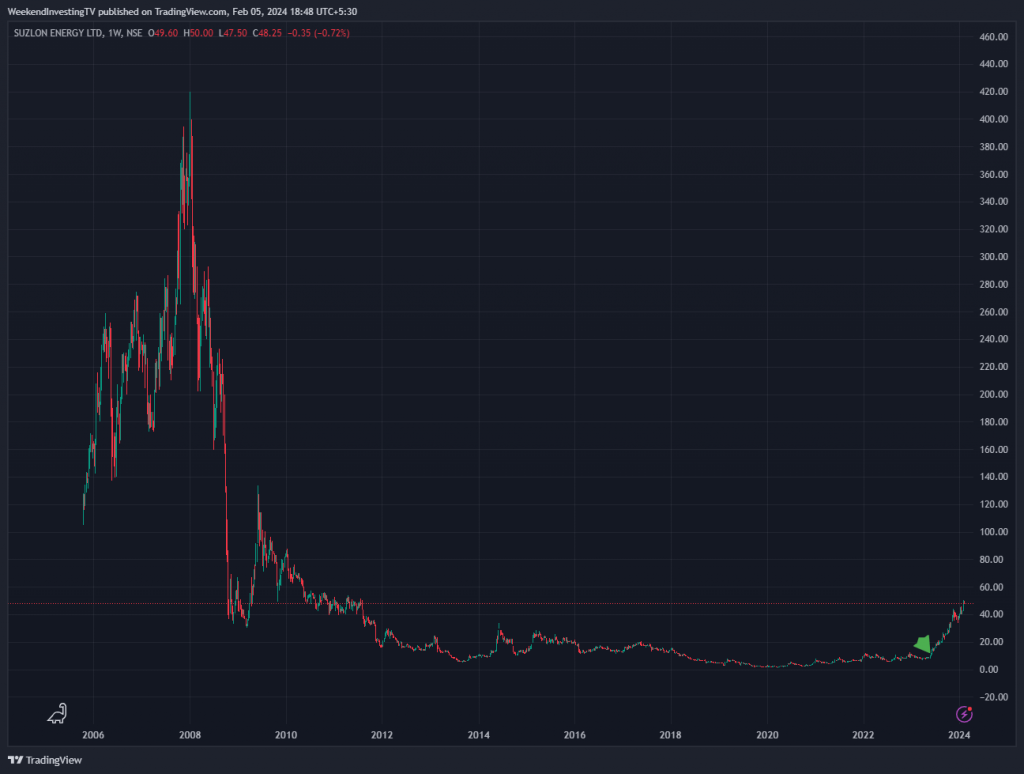Lessons from the History of Suzlon
Investing in the stock market can be a rollercoaster ride, with stocks soaring to incredible heights one moment and crashing to unimaginable lows the next. Understanding how to navigate through the ups and downs of the market is crucial for any investor. One such example is the history of Suzlon, a stock that experienced a dramatic rise and fall, teaching us valuable lessons about making informed investment decisions.
The Rise and Fall of Suzlon
In 2008, Suzlon was a highly sought-after stock, reaching an impressive value of Rs420. However, over time, the stock went through splits and its value plummeted to below Rs40. This drastic drop resulted in a massive 90% loss of market capitalization for investors within a short period of just nine months. Such a sharp decline can be devastating to anyone’s portfolio.

The Challenge of Identifying the Right Time to Exit
The history of Suzlon teaches us a crucial lesson – it is challenging to identify the right time to exit a stock, especially when it appears to be performing well. On a fundamental basis, it is often difficult to pinpoint when something has gone wrong with a company. In many cases, investors recognize the problem only after the stock price has dropped significantly and the damage has already been done.
It is easy to be optimistic when a stock is on the rise, such as when Suzlon went from Rs100 to Rs400. However, it is during the downward journey that investors must make critical decisions. Emotionally-driven decisions or conventional investing approaches often lead to significant losses, as seen with Suzlon’s decline from Rs120 to as low as Rs12 or even near Rs3.
The Importance of Having a Plan
To protect oneself from such drastic losses, it is crucial to have a well-defined investment plan and a structured strategy. Regardless of a stock’s historical baggage, a systematic approach can help investors make informed decisions without being clouded by emotions or previous disappointments.
In the same example of Suzlon. After its turbulent history, suppose an investor following a nondiscretionary, non-emotional investing system receives a signal to buy Suzlon when it reaches Rs10-12. Despite the baggage of the stock’s past, the investor should not let it disturb their decision-making process. By following the system, the investor can take advantage of Suzlon’s potential for a new journey.
Focusing on Discipline and Strategy
Investors who follow a disciplined and systematic approach often achieve significant returns without being weighed down by past performances. By focusing on the stock’s current potential and having discipline, investors can withstand market turbulence and potentially benefit from stocks that have been through rough patches.
Successful investing involves letting go of past baggage and embracing a fresh perspective. Stocks have the potential to bounce back, and companies can undergo significant transformations, such as changes in management. With a fresh view, investors can recognize the signals when a stock is reaching multi-year highs, indicating that something new and positive may be happening within the company.
In Suzlon’s case, after the demise of Mr. Tanti, the company experienced a new phase under new management. While the outcome remains uncertain, it is essential to approach stocks with an open mind and evaluate their potential when they are at new highs.
Having a Crystal Clear Exit Plan
A well-defined exit plan is crucial for successful investing. It eliminates emotional decision-making and provides investors with a clear threshold to exit a stock. By setting specific exit points, investors can confidently sell a stock without hesitation or fear.
For example, if an investor holds a stock such as Suzlon and it starts to decline from Rs55, they can set an exit point of Rs20 or worst case, Rs25-30. This crystal clear exit plan ensures that emotions do not interfere with investment decisions, protecting investors from significant losses and allowing them to maintain their discipline.

If you have any questions, please write to support@weekendinvesting.com









